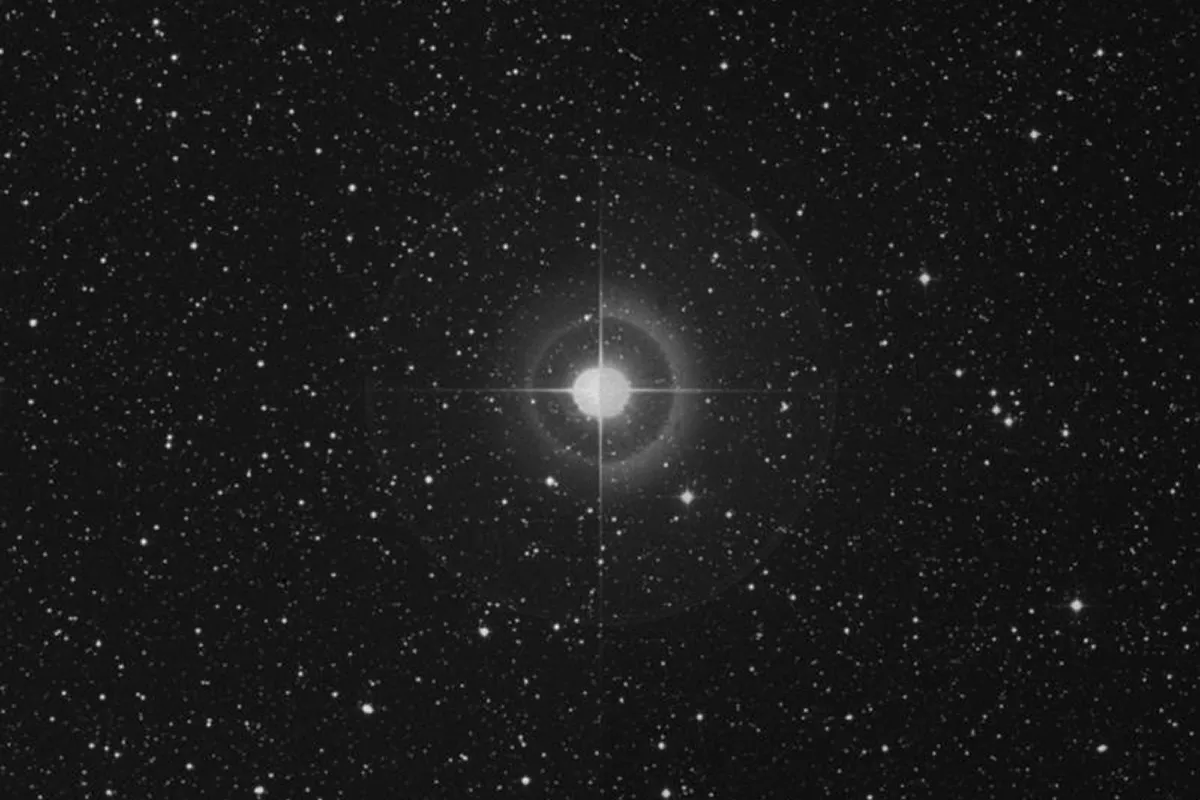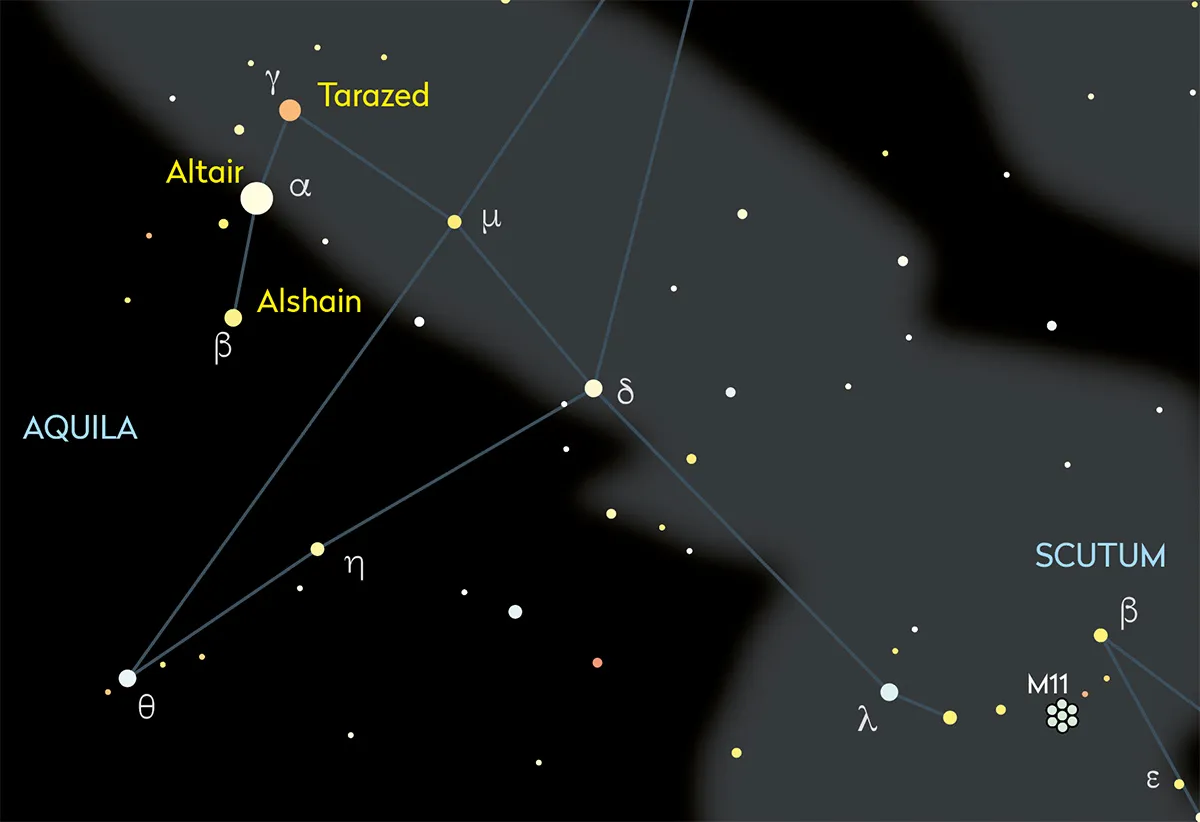Eta (η) Aquilae is an unassuming, fourth magnitude star in the constellation of Aquila the Eagle that can be best seen in the northern hemisphere in the summer months.
Eta Aquilae sits slightly less than 8° south of Aquila’s principal star, Altair (Alpha (α) Aquilae). In mythology Eta represents the head of Antinous, which is depicted being carried by the eagle.

Although it may not look that impressive, Eta Aquilae belongs to an important class of variable star known as the Cepheid variables.
Eta Aquilae was the first Cepheid recognised to exhibit variability following observations by Edward Pigott in 1784.
But it was his friend, John Goodricke who is credited as discovering the periodic nature of Delta (δ) Cephei, the prototype of the class.
Delta Cephei marks the southeast corner of the constellation of Cepheus the King.

The Cepheid category of stars is important because they exhibit a precise period of variability which is intrinsically linked to their luminosity, a property discovered by Henrietta Swan Leavitt in 1908.
If you measure a Cepheid’s period you can determine what its absolute magnitude is.
Absolute magnitude is the brightness a star would shine at from a standard distance of 10 parsecs (32.6 lightyears).
Eta Aquilae exhibits a variation of between mag. +3.6 and +4.4 over a period of 7 days, 4 hours, 14 minutes and 22 seconds.
At this brightness it is one of the prominent Cepheids in the sky, easily observable with the naked eye.
This guide originally appeared in the July 2019 issue of BBC Sky at Night Magazine.
